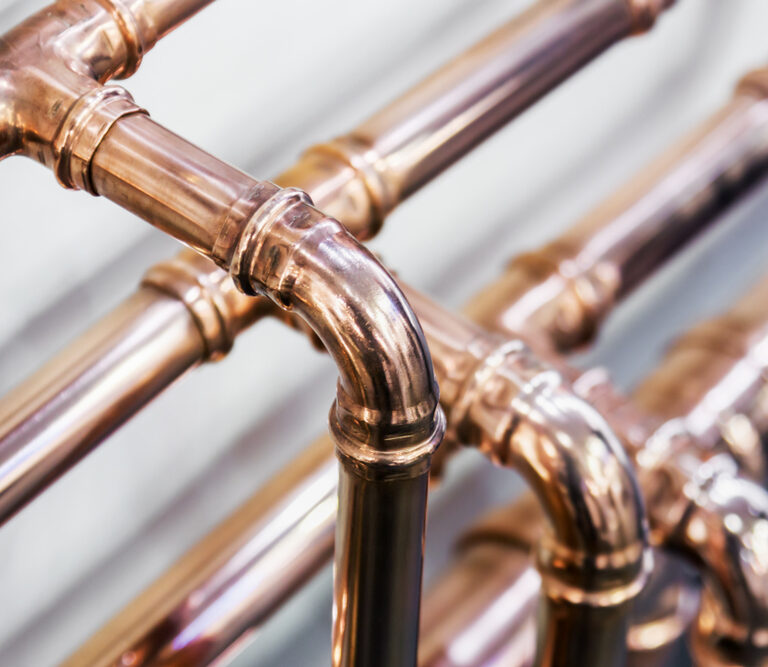Whether you’re doing some plumbing work yourself or preparing to speak with a contractor about a repair, learning about the types of water pipes in your home is essential.
The more information you have about your plumbing system, the easier it becomes to buy replacement parts, make repairs, and install new fixtures.
To start, you should know that your pipes can run through different parts of your home. In some houses, you’ll find pipes in your crawlspace, under your floors, or behind your walls. In others, your basement could hold your water lines or sewer pipes. Learning the location of these pipes is essential before identifying them.
Here’s a look at some of the most common types of water pipes you’ll find in your home, along with the jobs they typically handle.
The Difference Between Water Lines and Sewer Pipes
Before all else, it’s a good idea to learn about the differences between water lines and sewer pipes.
Water lines carry clean water from your city’s water source to your home. Once they’re inside the house, these pipes split and bring water to your fixtures.
One pipe will also send water to your water heater, and another will take the hot water back out to your fixtures.
You’ll find these pipes near any water or plumbing source in your home because they’re responsible for your water supply.
On the other hand, sewer pipes are responsible for removing waste from your fixtures and, eventually, your home. These pipes are typically greater in diameter than water pipes because they carry more than just water.
Both sewer pipes and water lines can run through the same areas of your home. It’s important not to mix the two of them up because you don’t accidentally want to start working on your sewer line if there’s nothing wrong with it.
Different Types of Water Pipes
The kind of pipes your home has generally depend on the age of the house and whether the plumbing system has undergone extensive renovations.
You can usually identify the type of water pipes you have through a visual inspection. There’s a good chance your home will have one of the more common types of pipe on this list, making it easy to tell what you have.
1) Copper Pipes
Copper pipe is one of the most common materials used for residential water lines, particularly in older homes. It’s easy to spot copper piping because it’s the same color as a penny. If you have copper pipes, it’s probably a rigid material, but keep in mind that flexible copper tubing does exist.
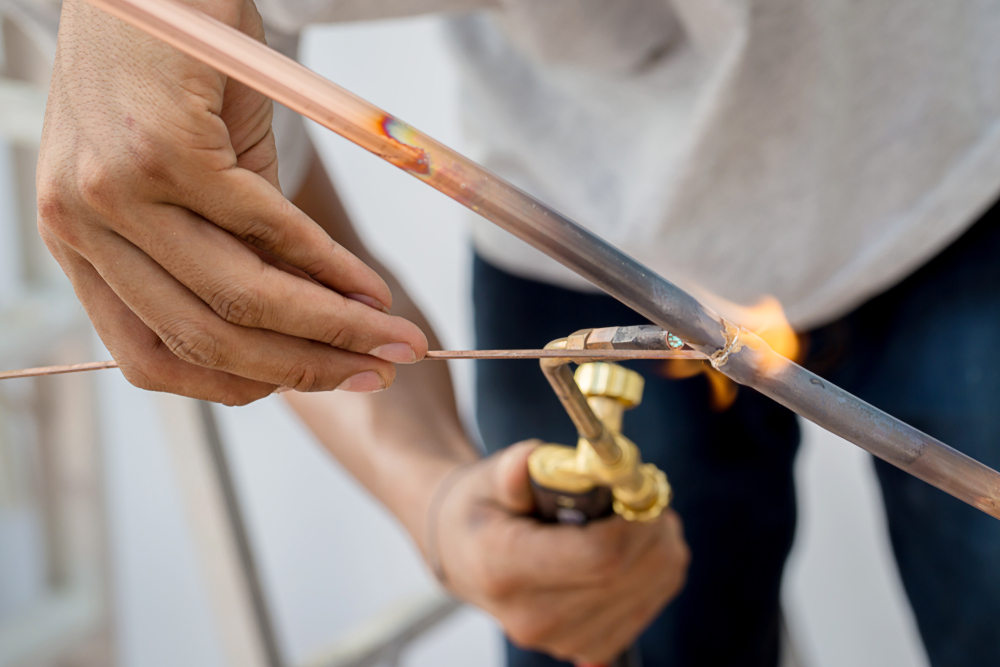
These pipes are usually 1/2-inch in diameter, although some homes have 3/4-inch copper pipes. This material isn’t prone to corrosion and can comfortably last for 50+ years.
Other benefits of copper piping include its temperature tolerance, safety, and recyclability. This material can carry both hot and cold water and doesn’t allow bacteria to thrive inside it, making it safe to use around the house.
However, there are some issues with copper pipes, starting with its primary installation method. Copper joints requires soldering with a propane torch, making its installation a challenging job for the novice homeowner. Keep in mind that push-to-connect fittings work with copper and are useful in some applications.
Another issue with copper is the upfront financial cost, as copper is a global commodity that has experienced a cost explosion in recent years. If you already have copper installed in your home, consider yourself lucky because it’s becoming more prohibitively expensive every year.
2) PVC Pipes
Polyvinyl chloride, or PVC, pipes are typically used in a home’s sewage or drainage system, although products marked NSF-PW or NSF-61 can carry water as part of a supply line. These pipes have a hybrid plastic and vinyl construction, and their thickness depends on their application.
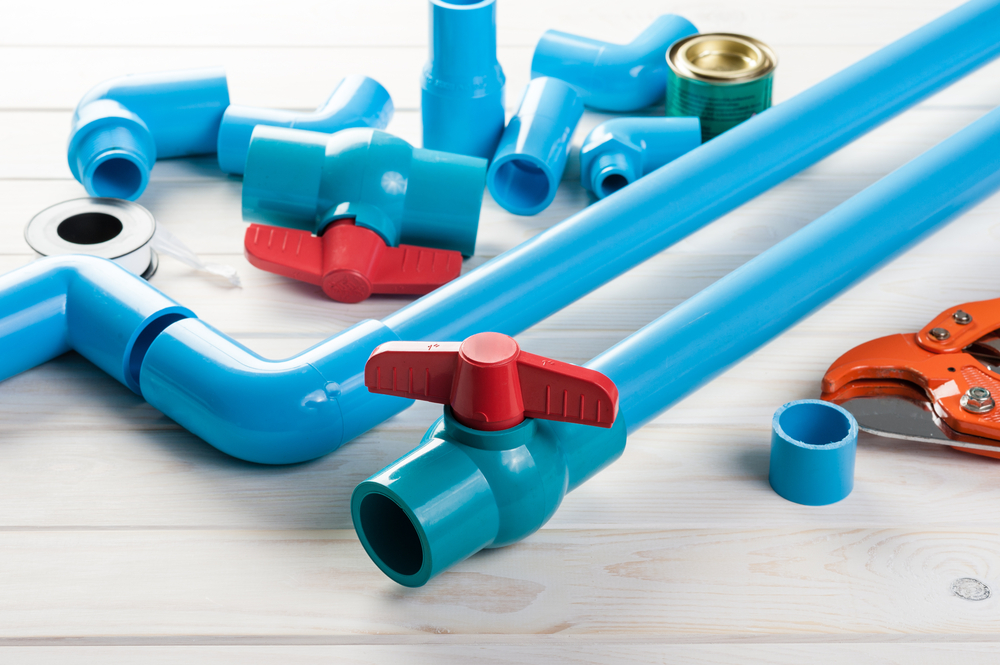
Some PVC pipes are useful for carrying pressurized water, such as the water that comes through your water main. In contrast, others are only useful as sewage pipes because they can’t handle hot water or additional pressure.
One benefit of PVC pipe is its longevity, as this product won’t rust or corrode. Therefore, PVC pipes can last indefinitely unless they experience damage from an unexpected blow.
These pipes are also extremely easy to carry because they’re lightweight, and since there’s no soldering necessary, a do-it-yourself homeowner can handle their installation. You’ll typically glue PVC pipe together, making them easy to work with in tight spaces.
The low cost is another thing that PVC pipe has going for it, as it’s an inexpensive option compared to copper.
The main drawbacks of PVC are its inability to carry hot water and its limited sizing options. Sizing can be an incredibly frustrating issue for inexperienced do-it-yourselfers because it slows the entire process while searching for the right parts.
3) PEX Pipes
When you head to your basement or crawlspace and notice a flexible plastic tube connected to your water main, there’s a good chance it’s PEX.
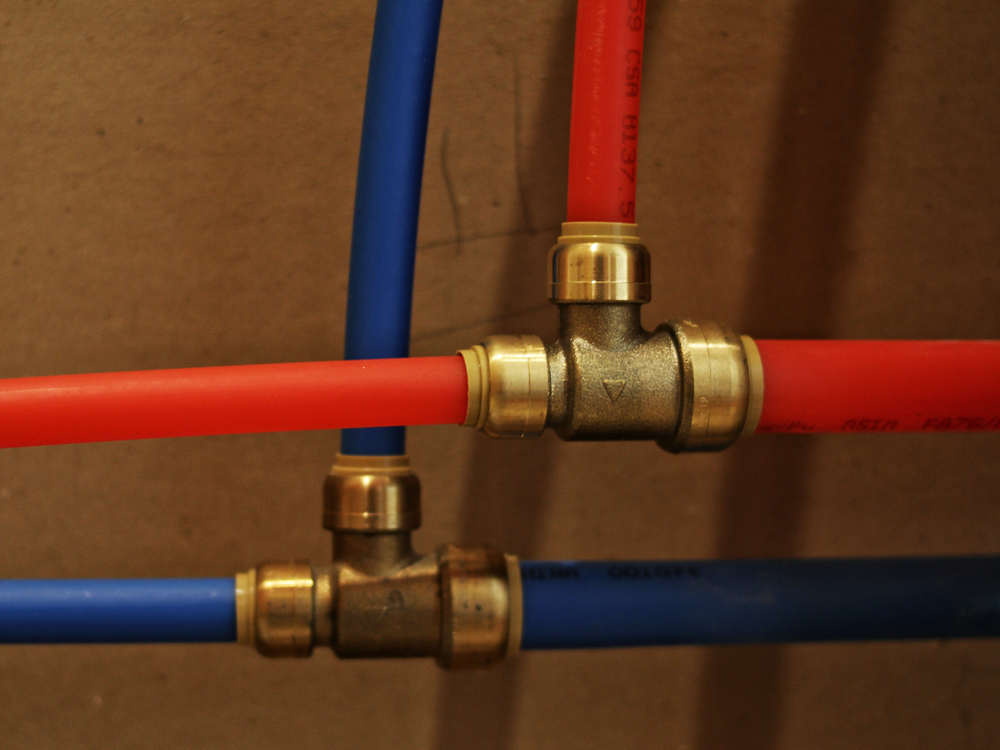
Polyethylene cross-linked pipe, or PEX, is an inexpensive plastic pipe that’s commonly used in water supply lines. This material doesn’t rust and is flexible, making it ideal for in-home applications.
This product is a preferred pipe for many contractors because it works with several different connection methods. As a result, it’s compatible with many of the tools on the market. These standard connection methods include copper crimp, stainless steel clamp, push-to-connect, and cold expansion with reinforced rings.
When you see PEX as part of your plumbing system, you’ll notice that it’s often color-coded with the blue pipe carrying cold water and the red tube holding hot water. However, there are white PEX pipes, too, which can have either hot or cold water.
One drawback to remember regarding PEX pipe is that you cannot use it for outdoor jobs because the sun’s UV rays can damage the material. Homeowners might also notice that their drinking water tastes slightly different after switching to PEX, especially in the beginning.
PEX is the go-to choice for water supply lines in newer homes or when homeowners replace their existing water lines because of its low cost and ease of use.
4) ABS Pipes
Take a quick look under your sink. If you see a black plastic pipe there, it’s likely made from acrylonitrile butadiene styrene or ABS.
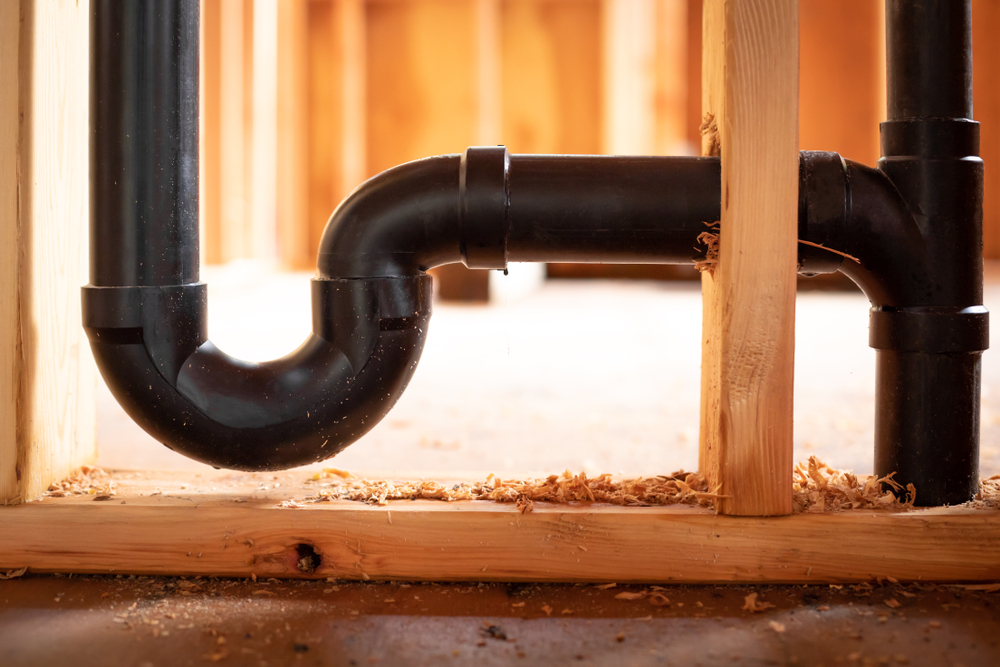
ABS is a durable material that has some similarities to PVC because of its plastic composition.
As for ABS’s benefits, it can withstand significant impacts without breaking, which is a feature you always want from a pipe that carries waste from your home. After all, a break anywhere along your sewer line not only requires a repair, but significant cleanup will also be necessary.
ABS is also lightweight, easy to install, inexpensive, and resistant to cold temperatures, making it useful for underground outdoor use.
However, much like PEX, you don’t want to use ABS in exposed outdoor areas because it breaks down under direct sunlight exposure. This product can also warp under extremely high temperatures, so you should avoid dumping boiling water down your drain if you’re using this material.
It’s also worth noting that ABS isn’t permitted in every area’s building codes. If you find that you have ABS pipes and they aren’t allowed in your region, you might have to replace them before selling the home.
5) Galvanized Pipes
It’s rare to find galvanized pipes in new construction, and a contractor is unlikely to install them when replacing your plumbing system. Galvanized material represents an old-fashioned type of water pipe that was common decades ago.
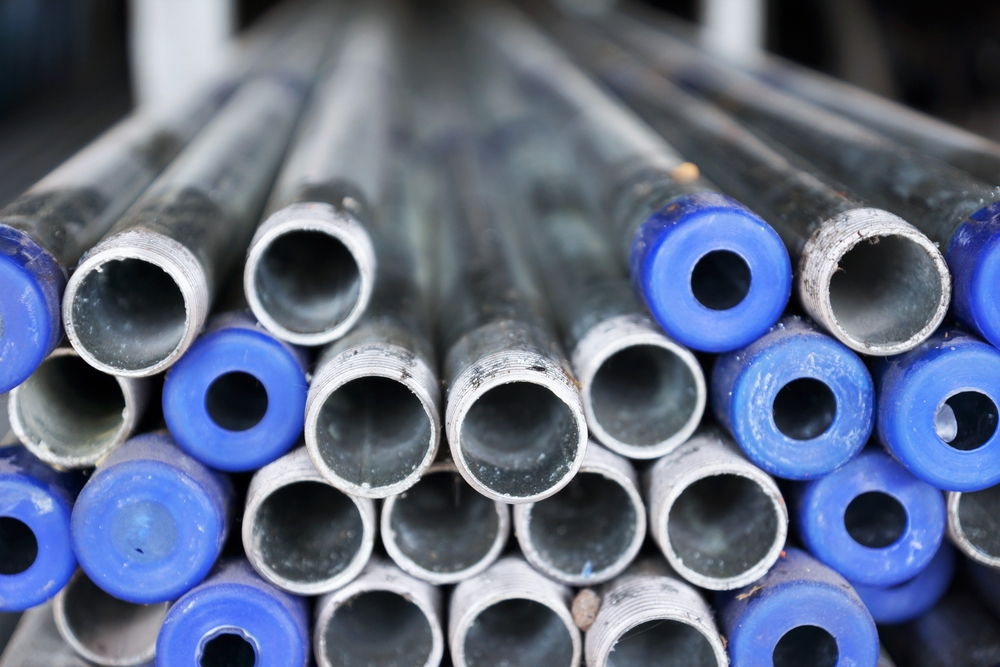
If you look at your pipes and see steel or another type of metal other than copper, there’s a good chance those pipes have been in place for decades.
The good news is that galvanized steel pipes are sturdy, long-lasting, and safe for drinking water or sewage.
The downside is that rust can build-up inside this material, and since water lines are so thin, this rust can have a significant impact on water flow and quality.
If you see traces of rust in your drinking water, it’s time to replace your galvanized pipes.
Final Thoughts
Whether you’re experiencing plumbing problems or just want to know what types of water pipes you have in your home, all it takes is a quick look wherever water from the main city line enters your house. Wastewater likely exits your home in the same location, so you’ll be able to see your sewage pipes too. You can then decide on whether to replace your lines or pick up the materials you need for a repair. The more you know, the easier it becomes to make important plumbing decisions around your property.
